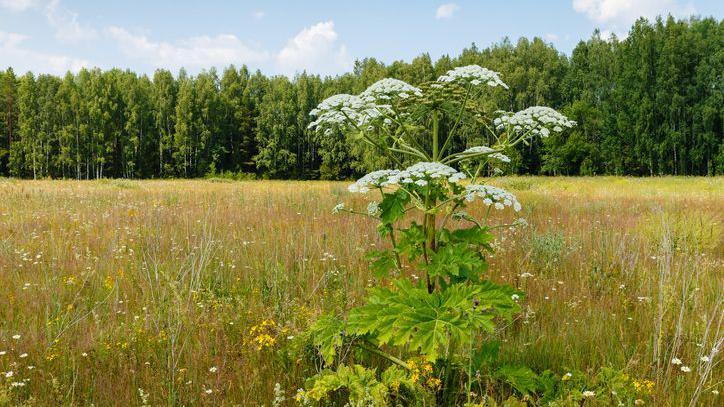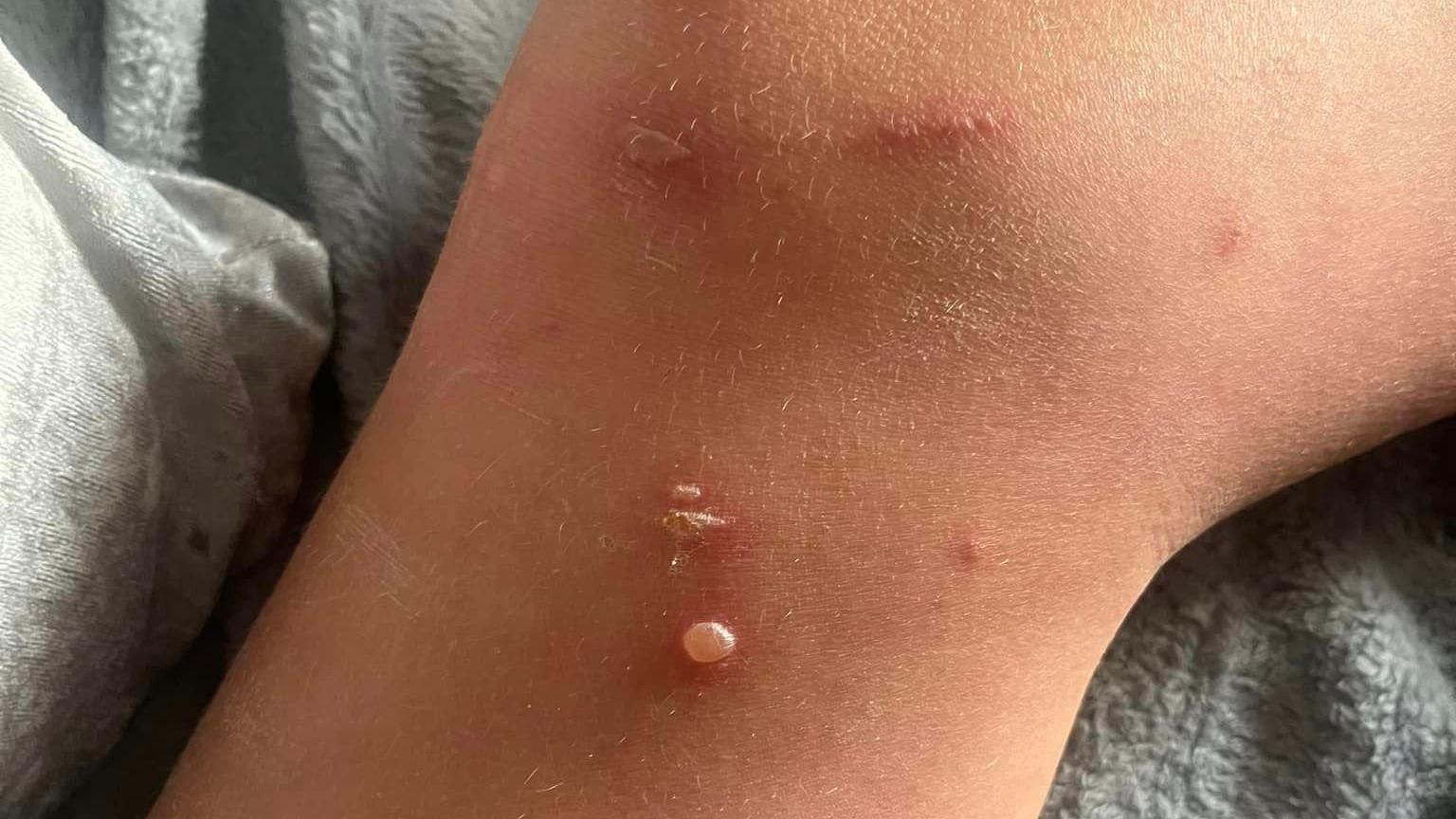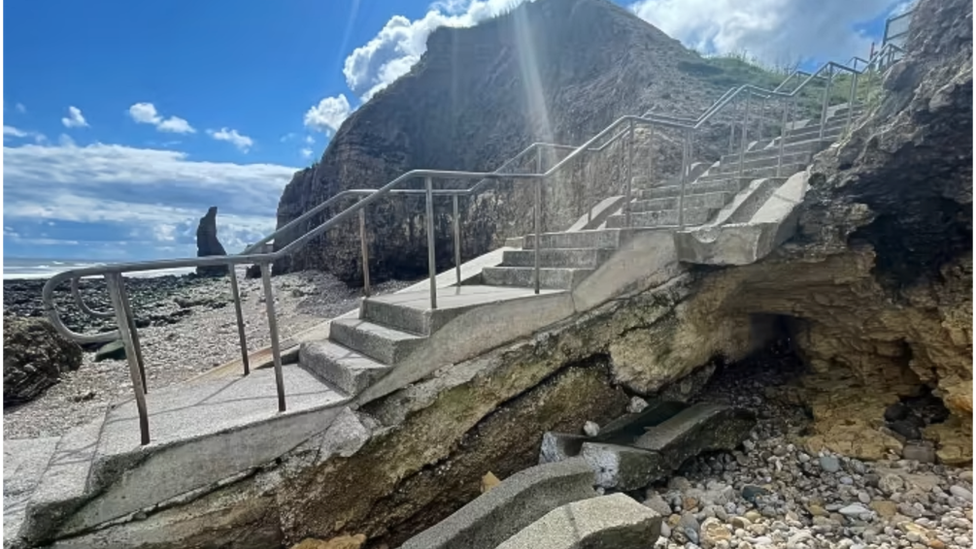Boy hurt after touching giant hogweed in park

Giant hogweed should be avoided, experts warn (stock image)
- Published
A boy has been left with blisters on his body after coming into contact with a toxic plant.
Jenson, nine, was stung by a giant hogweed in Ryhope Park, Sunderland, while trying to fetch a football.
Toxic sap from the weed, which grows near canals and rivers, can increase the sensitivity of the skin to sunlight, often leading to burns.
"It's worrying because when I drive around now I see the plant everywhere," Jenson's mum, Nina Price, said. "I didn't know anything about it before, but the thought of anyone falling in it is scary."
Sunderland City Council said it was aware of reports of the plant in the Ryhope area, and asked the public to stay away from it.
Heracleum mantegazzianum, known as giant hogweed, can grow up to 10ft (3m) tall and is generally biennial, according to the Royal Horticultural Society, external.

Nine-year-old Jenson was stung by the plant while trying to retrieve a football
Mrs Price said: "My son was playing football at Ryhope Park. The ball went into the goal - which doesn't have any nets - and went into where the hogweed is.
"On Saturday and Sunday it was fine, but on Monday morning, he woke up and had cat-like scratches on his arms and legs.
"On the night time, his skin started to blister so I took him straight to the doctors, where he was given antibiotics."
The advice was to keep the blisters clean and covered, she added.

Jenson's leg a few days after being stung by giant hogweed
Barbara Hall, who works at the Alnwick Garden in Northumberland, said: "The plant is phototoxic. That means that if you get the sap onto your skin, it causes a burn-like blister.
"It breaks down your skin's ability to protect you from UV-light. If you touch the plant, cover it from the sun straight away to stop it from reacting."
The dangerous plants lurking in plain sight
- Published11 July 2023
She added: "We had a one in the Poison Garden, external last year and [TV presenter] Matt Baker came and cut it down. He wore a hazmat suit with a mask on to do it, because it's so dangerous!"
Ms Hall stressed that if people did see the plant, they should keep their distance.
"If people see one, the best thing is to do is report it to the council and stay away from it."
Follow BBC Sunderland on X (formerly Twitter), external, Facebook, external and Instagram, external. Send your story ideas to northeastandcumbria@bbc.co.uk.
More stories from BBC North East and Cumbria
- Published28 January 2024

- Published16 August 2023
